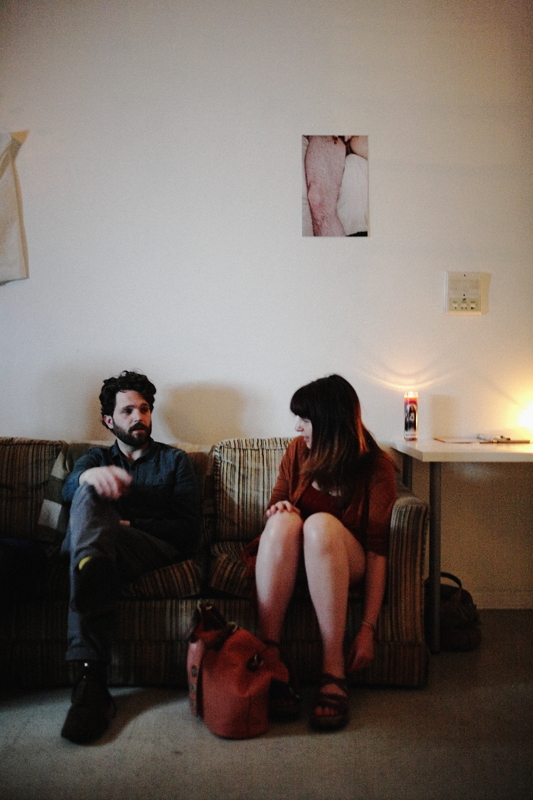 |
| Above: Autumn Elizabeth Clark, candid, standing before her video installation at Winkelman-Milling Projects on May 30, 2014. |
"I haven’t come yet"
May 30 - June 20, 2014
Winkelman-Milling Projects
960 W. Cullerton Street
Chicago, IL
http://www.autumnelizabethclark.com
http://www.winkelmanmillingprojects.com
Note: At the time of the writing of the review (below) the author found no press release from the gallery, nor published statement from the artist, with regard to the exhibition in question. No prior contact with Autumn Elizabeth Clark or her artwork informs the following text.
 |
| Above: Street signs at the intersection, Cullerton and Sangamon, nearest to Winkelman-Milling Projects in the neighborhood of Pilsen. |
 |
| Above: The entrance of Winkelman-Milling Projects, as seen from the second floor landing on May 30, 2014. |
 |
| Above: Tish Noel, back to camera; Autumn Elizabeth Clark, center, facing camera; Bill Gross, right.[2] |
 |
| Above: A holy candle, bearing Most Sacred Heart of Jesus iconography, at Winkelman-Milling Projects on May 30, 2014. |
 |
| Above: "I haven't come yet (I)," 2014, 21 x 23 inches, embroidery, by Autumn Elizabeth Clark. |
 |
| Above: "Untitled," 2014, 19 x 24 inches, embroidery, by Autumn Elizabeth Clark. |
 |
| Above: "Homevideos," 2014, dimensions variable, digital video, by Autumn Elizabeth Clark. |
It can be a very difficult time and place in which to ask questions. For example: If we consider that gender roles might be socially constructed, and "not natural," should we also consider that the movement to deconstruct gender roles might originate in an equally human, and consequently "unnatural," social phenomenon?
Shown above, Clark's "Homevideos," 2014, featuring both a male figure to who makeup is applied, and also Clark herself, wholly unadorned and voluptuous, suggests the great confusion of our time.[4] And it would be interesting to hear, from the artist, why such a work would not have fit in "State of Mind: New California Art Circa 1970" which was hosted by the University of Chicago's Smart Museum of Art from October 3, 2013 to January 12, 2014.
 |
| Above: University of Chicago BFA candidate Nicole Cherry, right, at Winkelman-Milling Projects on May 30, 2014. |
Notes:
[1] Autumn Elizabeth Clark is the graduate assistant for Laura Letinsky.
[2] Autumn Elizabeth Clark was an intern at Bill Gross' 65GRAND gallery 2012-2013.
[3] The scene of the exhibition was so dark that the presentation of photographs which were "true" would also have meant the presentation of useless, nearly black frames.
[4] The artist and hosts were courteous. And it's a reminder that such little civilization as we are left to enjoy depends more on our mutual behavior than it does on our intellectual consensus.
Above:
Images (1, 5, 6, 7, 8) May 30, 2014, shoe-mounted, on-camera flash used;
Images (2, 3, 4, 9) May 30, 2014, available light, large aperture, slow shutter, and high ISO, only;
Copyright Paul E. Germanos.
No comments:
Post a Comment